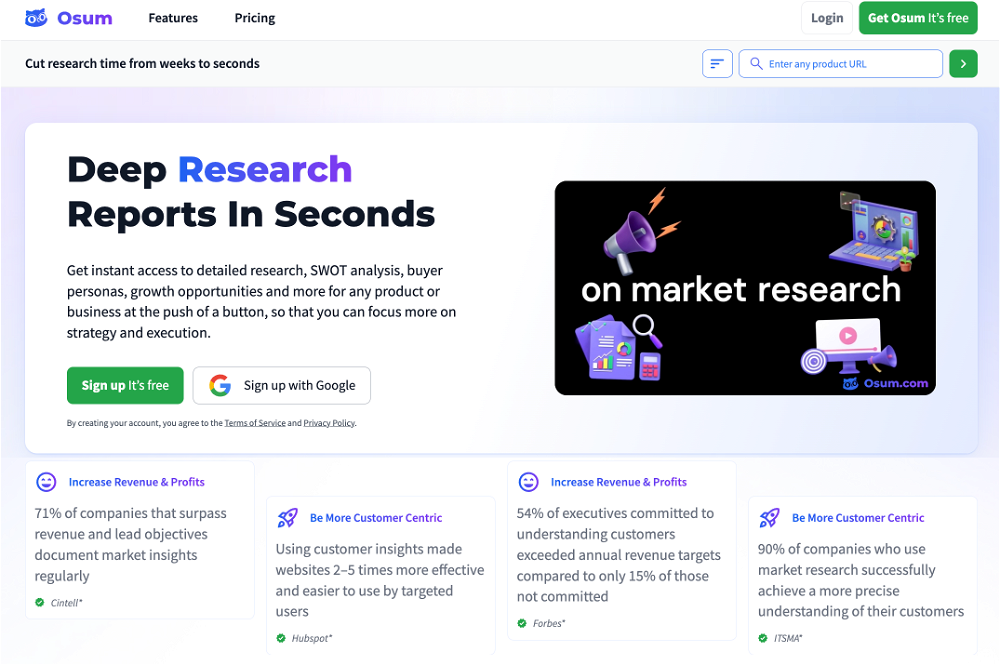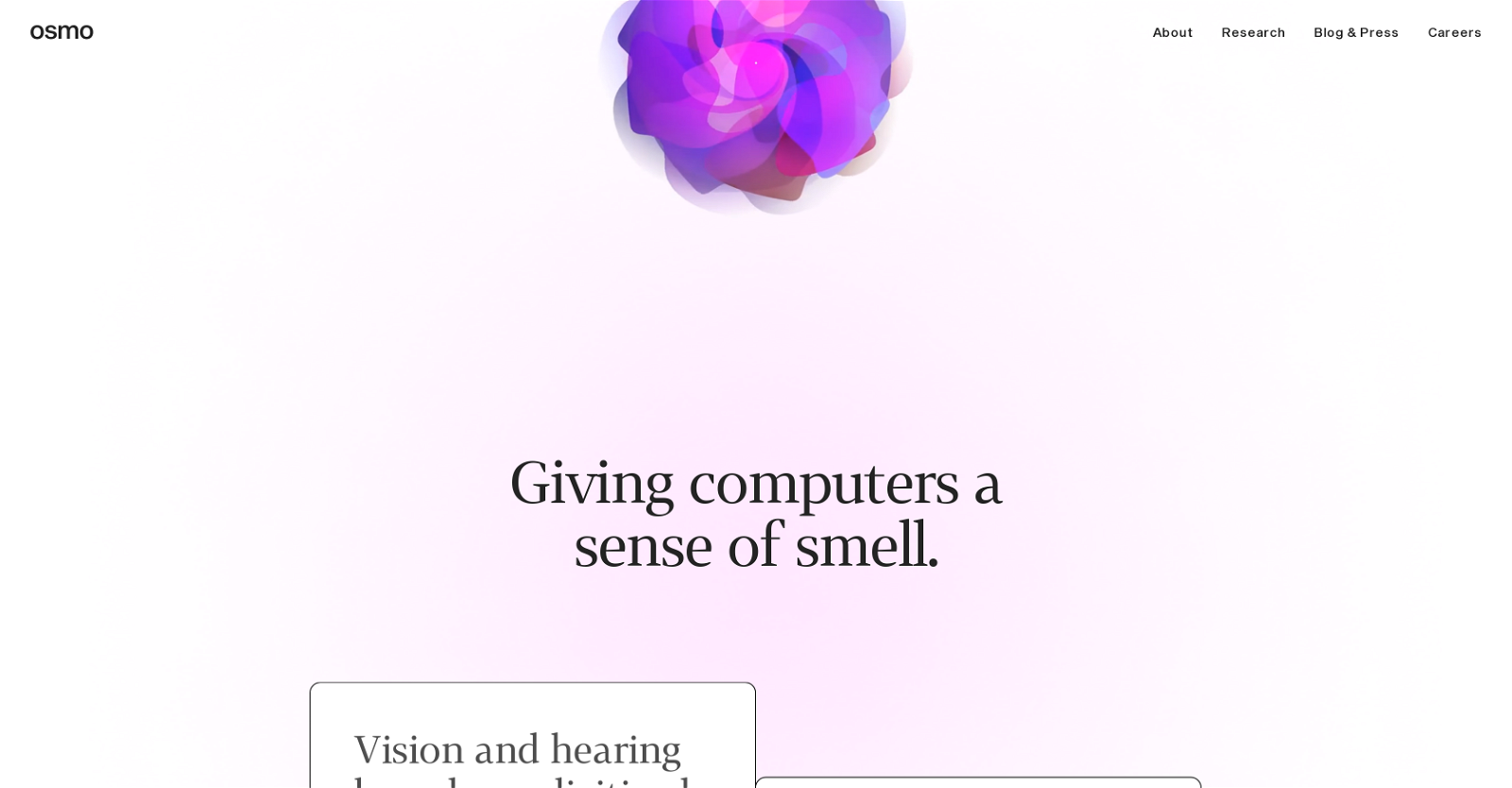What exactly is OsmoAI?
OsmoAI is a cutting-edge platform that brings together advanced artificial intelligence and olfactory science to digitize the sense of smell. It processes odor molecules into digital signals which are mapped and then converted back into actual scents. Its ultimate goal is to improve the health and wellbeing of human life through smell.
How does OsmoAI digitize the sense of smell?
OsmoAI digitizes the sense of smell through a three-step process. First, it reads or turns odor molecules into digital signals, much like how a camera processes light or a microphone processes sound. Secondly, it maps out these digital signals to understand how distinct molecules are perceived as specific scents. In the last step, it writes or converts these digital signals back into actual scents much like how printers or speakers translate digital data into physical output.
How does OsmoAI read, map and write odors?
OsmoAI applies the principles of reading, mapping, and writing to odors. In the reading phase, odor molecules are converted into digital signals, akin to converting atoms into bits. Mapping involves understanding and organizing these digital representations of odor molecules, much like RGB values for color, or frequency for sound. In the writing phase, these digital signals are converted back into actual scents, which humans can perceive.
What is the significance of Osmograph in OsmoAI?
The Osmograph in OsmoAI has great significance as it symbolizes the platform's attainment of its end goal, the complete capture and reproduction of a scent. It represents an accomplishment akin to a photo or a song, having the power to activate memories and evoke profound emotions.
What role does OsmoAI play in fragrance production?
OsmoAI plays a key role in fragrance production by turning the art of fragrance into a precise science. It digitizes scents, creating a map of odor molecules. Those molecules are then used as the foundation for writing scents from this map into fragrance ingredients.
How does OsmoAI aid in improving human well-being through smell?
OsmoAI aids in improving human well-being through smell by digitizing it, enabling a more precise and nuanced understanding of smell in various aspects of life, including health care and wellness. By tapping into our oldest sensory experience, it has the potential to affect mood, trigger memories and even mediate physiological responses.
What are the technical specifications of OsmoAI in relation to olfactory science?
OsmoAI combines artificial intelligence with olfactory science to read, map, and write odors. It converts odor molecules into digital signals, which are then understood and organized in a way that reflects their perception as distinct scents. These digital signals are converted back into perceivable scents. It uses AI to map and process the vast array of odor molecules to create a 'scentograph'.
What is the first global map of odor developed by OsmoAI?
The first global map of odor developed by OsmoAI is a comprehensive database of scent molecules turned digital signals. It's a pioneering effort where odors around the world have been captured and digitized for a consistent and universal understanding of smell.
How does OsmoAI create distinct scents using digital signals?
OsmoAI creates distinct scents by turning odor molecules into digital signals, which are then mapped based on their individual characteristics. The mapped digital signals are then converted back into actual scents using the proprietary writing process of OsmoAI, allowing for more nuanced and accurate fragrance recreations.
How does OsmoAI capture and reproduce scents?
OsmoAI captures a scent by converting odor molecules into digital signals. These signals are mapped in order to understand scents at a molecular level. Then, through the writing process, it reproduces the scent by converting these digital signals back into the actual scent. It's an end-to-end process they term 'Osmograph'.
What is OsmoAI's role in eliciting emotional responses?
OsmoAI plays a role in eliciting emotional responses by digitizing odors. As smell is closely tied to memory and emotion, the capability to capture and reproduce scents digitally means, it can effectively 'trigger' memories or evoke specific emotions by mere reproduction of a given scent.
What aspects of olfaction does OsmoAI specifically digitize?
OsmoAI specifically digitizes the perception of odor molecules by turning them into digital signals. It maps these signals to understand how different molecules are interpreted as different scents by the human olfactory system, and then it turns this information back into physical scents.
What is the process involved in OsmoAI's scents reproduction from a map into fragrance ingredients?
The process involved in OsmoAI's scent reproduction from a map into fragrance ingredients starts with the reading of odor molecules turned digital signals. These signals are mapped to understand their distinct characteristics and how they are perceived as specific scents. Lastly, these mapped digital signals are written back into actual scent molecules, creating new fragrance ingredients.
How effective is OsmoAI at producing actual scents from digital signals?
OsmoAI is highly effective at producing actual scents from digital signals. Utilizing AI and olfactory science, it can accurately convert digital representations of odor molecules back into perceptible scents. This powerful capability paves the way for unprecedented precision in scent reproduction, whether in fragrance production or smell digitization applications.
What is the potential of OsmoAI in health and well-being field?
OsmoAI has immense potential in the field of health and wellbeing. It opens new directions in healthcare diagnostics through smell, potentially enabling the early detection of various diseases. Moreover, by reproducing specific scents associated with positive memories and emotions, it can contribute significantly to wellbeing and therapeutic interventions.
What makes OsmoAI different from other AI technologies?
OsmoAI is different from other AI technologies due to its unique focus on olfactory science. While most AI technologies are oriented towards visual, auditory or analytical tasks, OsmoAI aims to digitize the largely neglected sense of smell. It's also distinctive in its approach of creating a global map of odor and striving to reproduce it end-to-end.
How does OsmoAI map the sensory world?
OsmoAI maps the sensory world by converting odor molecules into digital signals and organizing them in a way similar to how RGB represents color or frequency represents sound. This process involves understanding how these distinct digital representations are related and perceived as distinct scents, ultimately forming a global map of smell.
What progress has been made in OsmoAI's journey towards digitizing smell?
OsmoAI has made significant strides in its journey to digitize smell. It began by developing the world's first map of odor by reading odor molecules and converting them into digital signals. It's now working towards achieving its ultimate goal of end-to-end reproduction of detected scent, an accomplishment it terms as creating an 'Osmograph'.
What future plans does OsmoAI have for digital olfaction?
While the specific plans for OsmoAI's future in digital olfaction are unknown, it's reasonable to infer that the platform will continue to refine its technology, expand its odor mapping, and find new ways to apply its unique capability. This might include deeper involvement in fragrance production, healthcare applications or other areas where smell plays a vital role.
How does the platform OsmoAI work in relation to sensory AI?
OsmoAI integrates sensory AI in its platform to map, understand, and reproduce the sense of smell. It uses AI algorithms to process the vast array of odor molecules, translate them into digital signals, map these to understand their relation and perception, and finally, to convert these digital signals back into real, perceivable scents. It's an application of AI that opens up a new frontier in sensory understanding.







